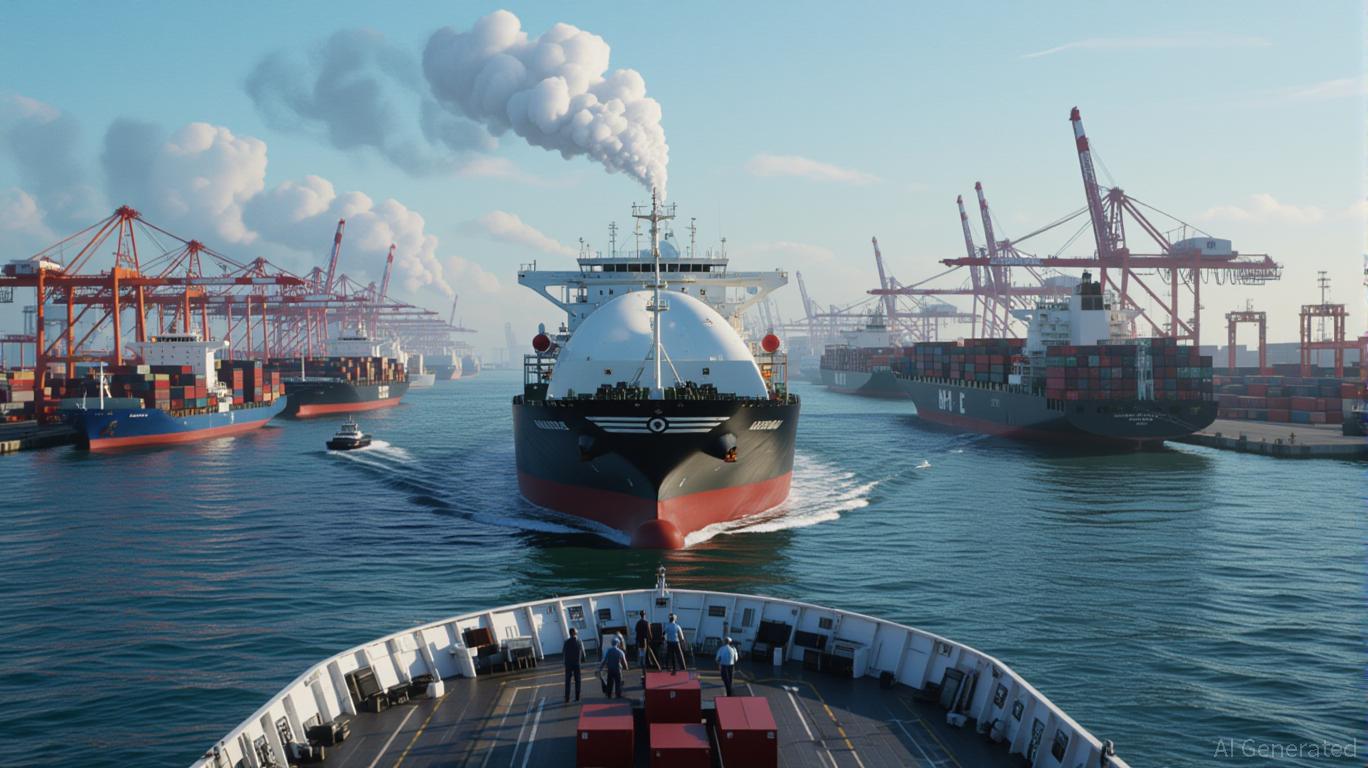
The global energy landscape is undergoing a seismic shift, driven by geopolitical realignments and the urgent need for energy security. For U.S. liquefied natural gas (LNG) investors, the EU-South Korea trade agreements of 2025 represent a pivotal development. These agreements, rooted in the post-Ukraine invasion imperative to diversify energy supplies, are creating a perfect storm of demand, policy tailwinds, and strategic positioning that could supercharge American natural gas exports—and the companies behind them.
A New Energy Partnership: EU-South Korea and the U.S.
The EU’s 2025 energy trade pact with South Korea, while not yet disclosing granular details, is unmistakably tied to the broader transatlantic energy strategy. The EU, already sourcing 55% of its LNG from the U.S., has locked in a $250 billion annual procurement of American energy through 2028, part of a $750 billion trade deal. South Korea, meanwhile, has pledged $100 billion in U.S. LNG purchases over the next four years under its own trade agreement. Together, these commitments underscore a shared goal: reducing reliance on adversarial energy suppliers like Russia and the Middle East.
The strategic logic is clear. South Korea, a top-three global LNG importer, is transitioning from coal and nuclear power to cleaner energy. The EU, meanwhile, is racing to replace Russian gas with alternatives that align with its climate goals. For the U.S., this means a surge in demand for its LNG, which has already become the world’s largest exporter. Companies like Cheniere Energy, Venture Global, and NextDecade are poised to benefit as new terminals and infrastructure come online, with U.S. LNG capacity expected to nearly double by 2028.
Navigating the Methane Challenge
Yet, the U.S. must navigate a critical hurdle: methane emissions. The EU has announced a legal framework to monitor, report, and verify (MRV) methane intensity in imported LNG, with enforcement set for 2030. South Korea and Japan have joined the Coalition for LNG Emission Abatement Towards Net Zero (CLEAN), signaling a global trend toward stricter environmental standards.
U.S. LNG currently lags behind Australian, Saudi, and Norwegian suppliers in methane intensity but outperforms Russian and Algerian LNG. The Inflation Reduction Act’s methane fee and abatement measures could close this gap, but investors must watch closely. Failure to meet these benchmarks risks losing market share to competitors who prioritize cleaner supply chains.
Geopolitical and Market Dynamics
The EU-South Korea agreements also highlight the U.S.’s role in countering China’s growing influence in global energy markets. China has aggressively purchased U.S. LNG for resale, funding its renewable energy expansion and geopolitical reach. By securing long-term contracts with allies like South Korea and the EU, the U.S. not only secures its economic interests but also reinforces a network of energy partnerships that limit China’s ability to dominate the global LNG trade.
However, the EU’s decision to halt re-exports of Russian LNG to non-EU countries in March 2025 could create short-term volatility. While this opens new opportunities for U.S. LNG, it also underscores the EU’s preference for politically aligned suppliers. For investors, this means U.S. LNG is not just a commodity but a tool of geopolitical strategy—a factor that could stabilize demand even in a volatile market.
Investment Implications
The data tells a compelling story. U.S. LNG exports to the EU and South Korea have grown by an average of 18% annually over the past three years, outpacing growth in other regions. Meanwhile, the stocks of major LNG exporters like Cheniere Energy have surged 45% in 2025, driven by contract renewals and infrastructure investments.
For investors, the key is to balance optimism with caution. While the tailwinds are strong, the industry faces headwinds from overcapacity risks and rising compliance costs. Diversification across the LNG value chain—production, liquefaction, and transportation—can mitigate these risks. Additionally, companies that invest in methane reduction technologies and digital trade platforms (e.g., blockchain for MRV compliance) are likely to outperform.
Conclusion: A Strategic Window for U.S. LNG
The EU-South Korea trade agreements are more than trade deals; they are blueprints for a new energy order. For U.S. LNG investors, this represents a unique window of opportunity. By aligning with allies, reducing emissions, and leveraging infrastructure expansion, American natural gas can solidify its role as the bridge fuel of the 21st century. The challenge will be maintaining this momentum as the global energy transition accelerates—but for those who act decisively, the rewards could be substantial.
